I venture out into the early morning stillness. The fog lifts with the rising sun. I pick my way carefully over the lawn, it’s blades still wet. I am here to prune, to pick, to breathe. The Victorians called it “taking the air,” I think. It’s August, and the kitchen garden has changed over from Spring to late Summer.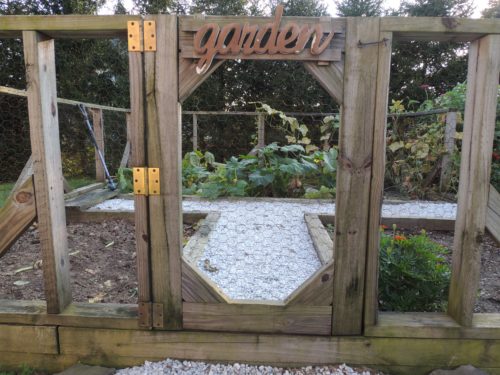
The fencing around the kitchen garden is weathered to perfection. It’s taken over ten years to get this point. Good things can not be rushed. The gate is secured to the post with brass hinges, and a small hook acts as the latch. What really keeps it in place though is the swelling of wood on wood.
The kitchen garden – part hobby, part utility, gives one a sense of accomplishment. One is growing things often from seed, sometimes will a little help from the local nursery. It’s work, and it’s joy.
With a regretful and grateful heart, the green beans are pulled up and tossed onto the mulch pile. Their yield exceeded expectations, out-growing our ability to harvest them. The strings that remain have grown too large and would be bitter.
A gardener’s tools are simple. Poultry shears and suede-palmed gloves. Garden gloves are purchased in three-pair bundles at the end of Winter and are thrown out after Autumn clean-up.
A pair of ten-year old sneakers make the perfect footwear for traversing dewy grass, mud, and whatever else the gardener is liable to step in! High-tensile glue and duct tape for clamping have extended the life of this footwear well past the manufacturer’s specs.
The cucumber vine has stopped producing and should join the mulch pile. But I can’t bring myself to pull it up. Even with half it’s leaves dried up it still looks beautiful clinging to the fence.
The zucchini and yellow squash get pruned. The gardener’s task is to determine which leaves are still feeding the vegetables, and which are suckers. And the decision is sometimes subjective.
One bed is given over to flowers. Zinnias add brilliant color and grow up to five feet. The blossoms do not give off an odor, but they are a hardy plant and attract bees, humming birds, and butterflies. Marigolds contribute red and gold colors and emit an odor which repels harmful insects. One can see the Zinnias crowding out the Marigolds, a third of which have been transplanted about the squash beds.
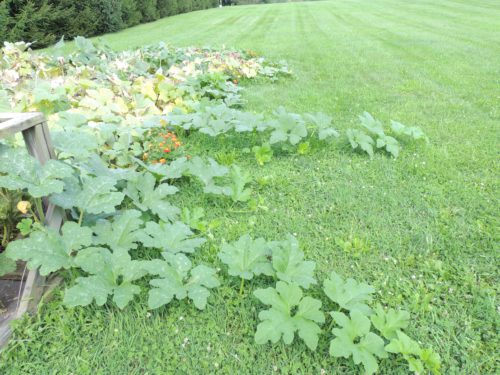 In the upper beds, Pumpkin plants initiate a welcome encroachment onto the lawn.
In the upper beds, Pumpkin plants initiate a welcome encroachment onto the lawn.
As the zucchini matures, leaves begin to die off as they finish transferring the last of their nutrients and water to the vegetables. Amid the browning of the late Summer this zucchini leaf, a full 20 inches in diameter is still feeding new specimens.
Pumpkins intertwine with zucchini and mimics in the upper beds. Mimics are weeds that resemble squash and tend to grow in or near gardens. Fully mature squash are two strong for mimics to choked out, so vegetable and weed live side by side in a state of detente. In the background, the colonel’s wife gathers this week’s harvest. Everything will find its way into some recipe or another.
No prizes at the country fair, but an impressive specimen never-the-less. This pumpkin found itself deposited on the ledge by it’s parent vine and seemed content to remain there.
It’s easy to forget that zucchini are squash. This one hid under the the broad leaves of it’s vine for weeks!
Back in the lower beds. Front row: green pepper, jalepeno pepper, egg plant. Each green pepper plant has yielded one to two vegetables per week for the last two months. The eggplants are particularly generous this year – about one every other week. The jalepeno plants has been yielding nearly half a dozen peppers each week.
Back row – beefsteak and plum tomatoes begin to ripen.
 To get the most out of one’s tomato plants, you have to be mean to them.
To get the most out of one’s tomato plants, you have to be mean to them.
On the side of the tool shed, the seeds from discarded pumpkins met with some interesting results.
Squash needs the sun, though. Huddled up next to the shed, this plant had too much shade to produce anything. Brilliant blossoms, but not a single female among them.
Just off the back deck, dozens of Black-eyed Susans provide a nice display.
One of over a dozen pottings Lois lovingly creates in the early Spring.
What kitchen garden is complete without a collection of carefully potted herbs? Basil, parsley, cilantro, and mint all find their way into the cooking pot.
Every gardener will tell you that a good garden begins in the late Autumn or early Winter.
Mulch piles, fence maintenance and copious tool cleaning are vital components.
Here in Pennsylvania we are blessed with the friendship of 3 families that keep horses and have an abundance of “nitrates.” I am always greeted warmly when I pull up with my trailer, in late October or early November. It is the very model of the mutually beneficial relationship :-).
Selah.

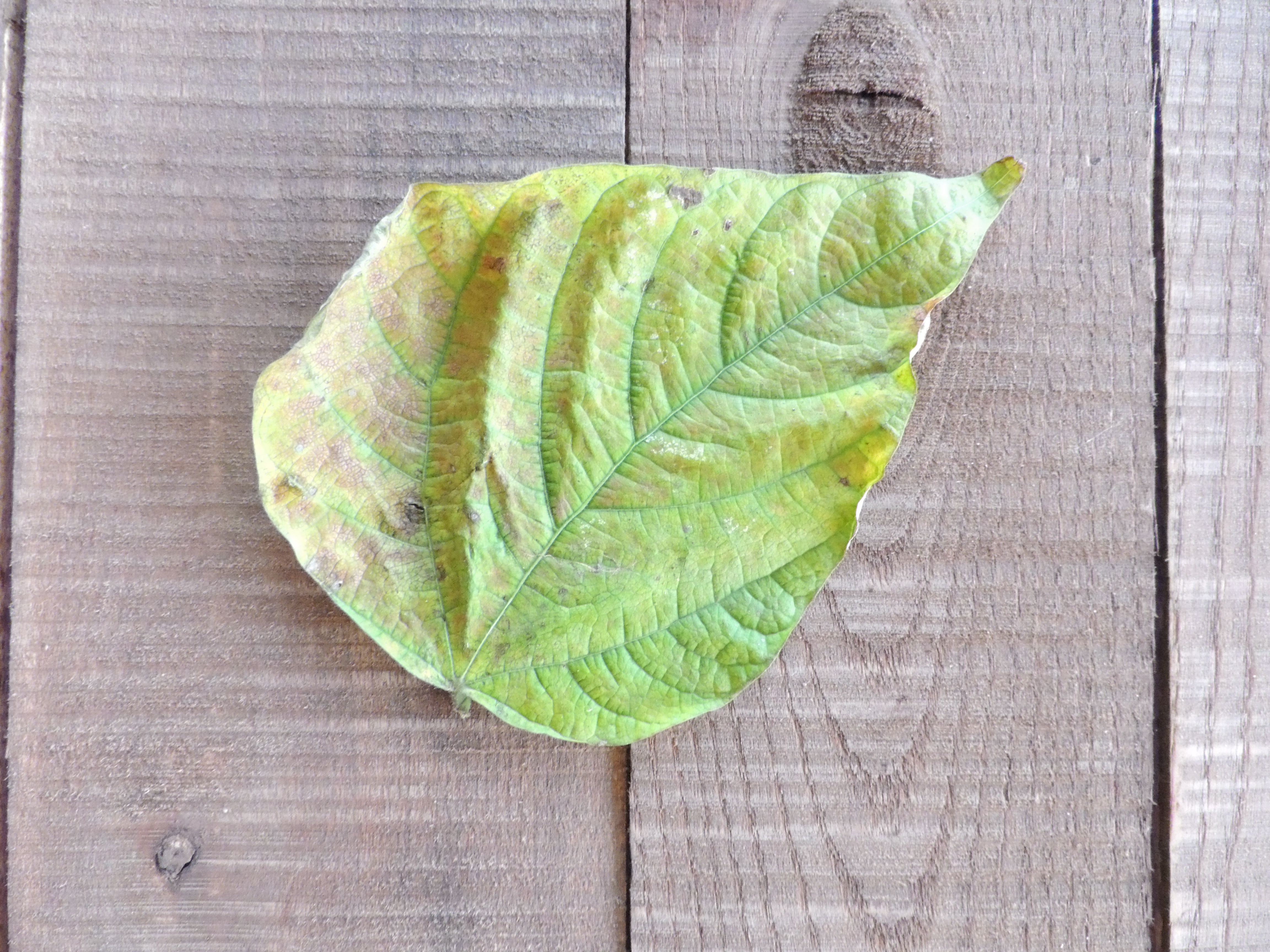
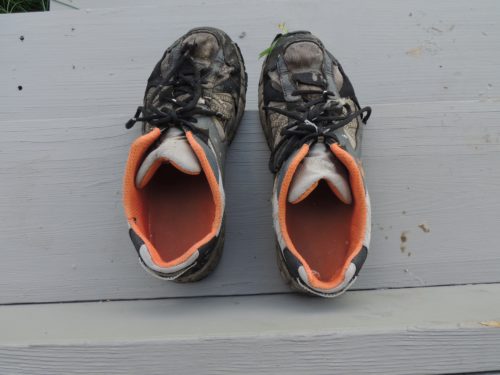
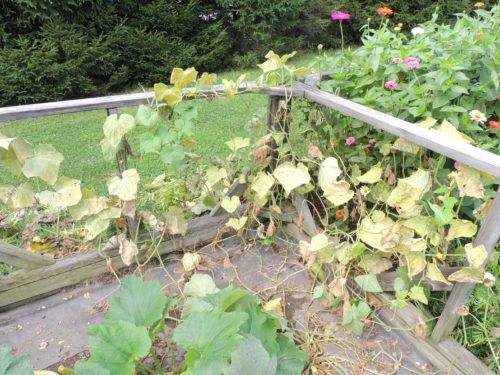

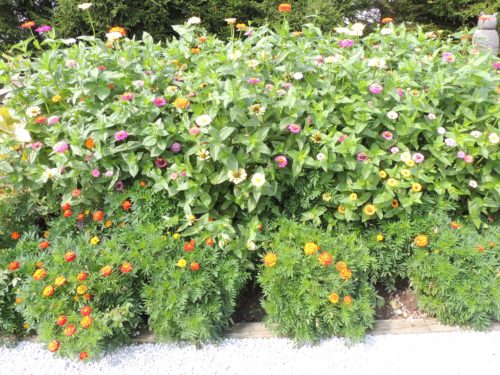

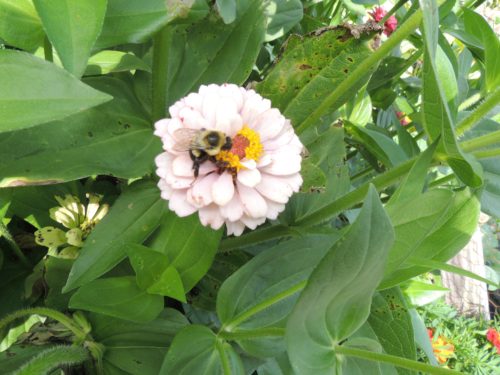
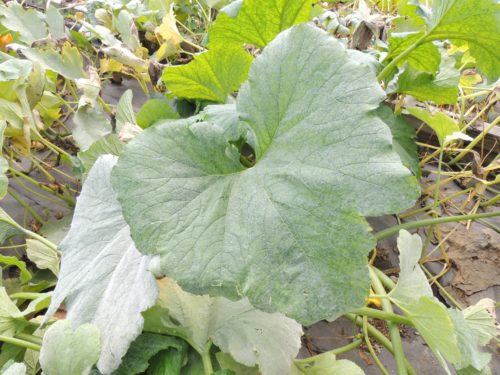
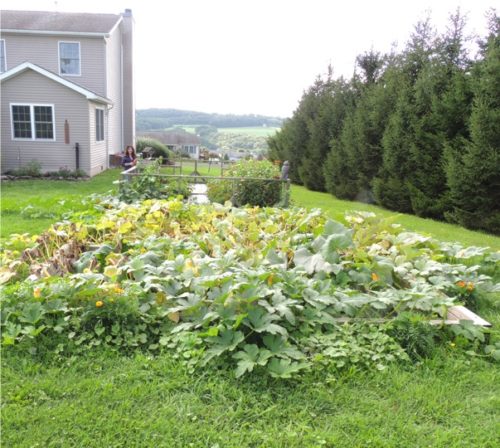
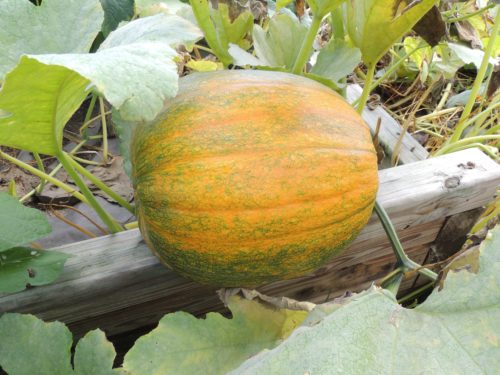
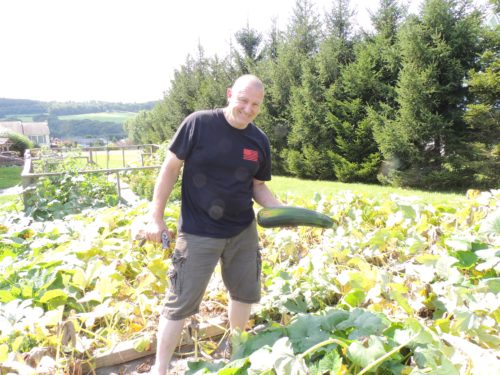

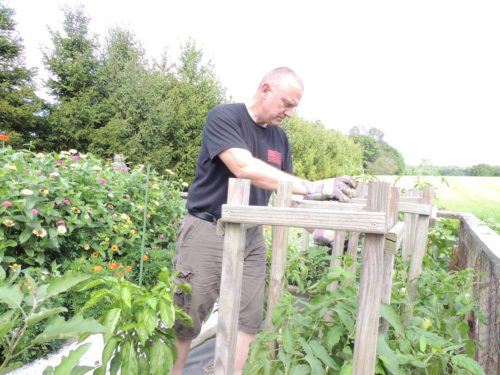
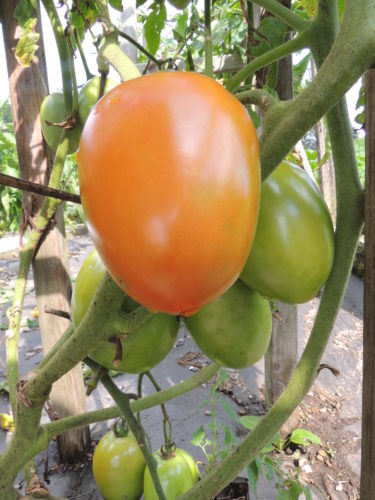

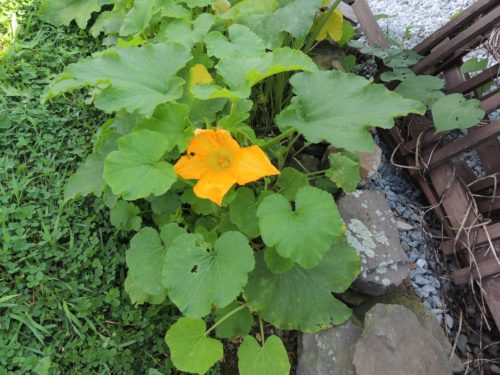
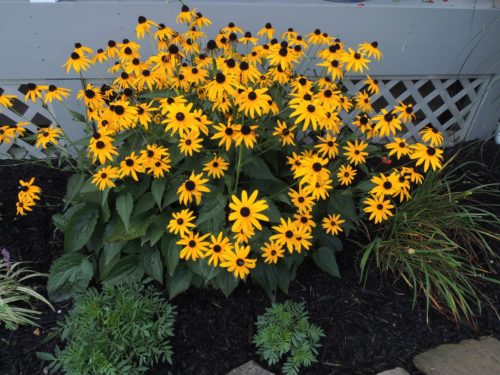



I absolutely love your working garden in all it’s beauty and abundance, but because I live in Pebble Beach, CA where we’ve got no real sun (and we live in a “sun-belt” area in PB!), my real affection is for your writing. Someday a book on gardening, perhaps. It’s all so funny (in a good way) and while what you do is hard work, it’s just entertaining to read what’s going on in your area. Thank you (and my husband read this blog thought it well done too).
If you didn’t do so this year, next spring plant your tomatoes up to their necks. Take the tallest, scrawniest tomatoes you can find from the nursery and use a post hole digger to plant them so they are barely above ground. All those little bumps on the stems are roots looking for soil. If you plant them deep, they may never find out about the drought in mid-summer. Inside of a month they will rival the best looking $5 apiece tomato plants in the nursery and will out-produce them 2-3 times over because of those deep roots. Tomatoes need constant water — not necessarily a lot — but constant. Roots 2′ deep give them this.
I have photos of tomatoes (Mortgage Lifters) growing in a tiny yard in Detroit that were giving ripe fruit at the 12′ mark (2′ above my support) well after the first hard frost. IIRC, we got our first snow that year a couple weeks after I took them down and scavenged the green ones to ripen indoors.
Nice garden, by the way, and well-written prose.
Thank you for sharing your garden with us. It is beautiful. Visiting from #HomeMattersParty